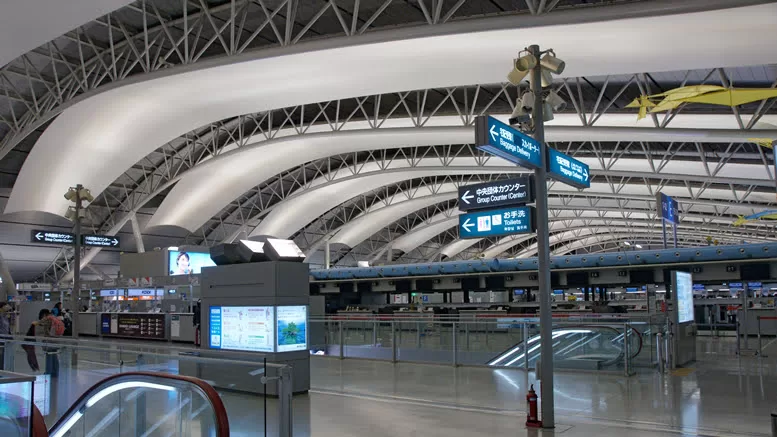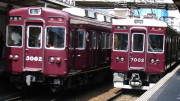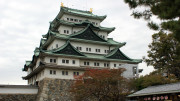Osaka is serviced by two major airports, Osaka International Airport and the newer Kansai International Airport.

Like Tokyo, Osaka’s airport naming can be a bit confusing. The older Osaka International Airport still retains its international name, despite now handling only domestic flights. Originally known as Itami Air Base in the 1930s, it is still often unofficially referred to as Itami International Airport. Additionally, a third domestic airport, Kobe Airport, opened in 2006, about 25 km away.
Kansai International Airport was built on a man-made island in the southern part of Osaka Bay and was one of the most expensive construction projects in modern history. A Discovery Channel documentary highlights the challenges faced during construction, from building an artificial island in an earthquake-prone zone to managing the island’s gradual sinking under its own weight.
Construction of Kansai Airport began in 1987, and it officially opened in 1994 as the primary international airport serving Osaka, Kyoto, and Kobe. Its terminal building is the longest airport terminal in the world, and ongoing expansion efforts aim to double the island’s capacity with additional runways and terminals.
Getting to and from Kansai International Airport
For travel between Kansai International Airport and Osaka, Kyoto, or Kobe, the most convenient options are train or shuttle bus, as taxis can be quite expensive. Buses depart from just outside the arrivals hall, with some services dropping passengers at major hotels. Alternatively, other bus routes operate from the 2nd level of the terminal.
Two rail companies service Kansai Airport: Nankai Electric Railway and JR West. The best option depends not just on speed, but also on which line brings you closest to your destination with minimal transfers.
-
- Nankai’s services include the Rapi:t Limited Express, which reaches Namba Station in just 39 minutes. A slightly slower but more affordable option is the Airport Express, which takes 43 minutes to Namba. If you need to reach northern Osaka, you will need to transfer to the subway at Namba Station to continue through central Osaka.
- JR operates two major services from Kansai:
- The JR Haruka Limited Express reaches Tennoji Station in 30 minutes, Shin-Osaka in 50 minutes, and continues to Kyoto in 75 minutes. Since Shin-Osaka Station is the terminal for the Shinkansen bullet train, the Haruka Limited Express is the best choice if you plan to travel to other regions of Japan.
- The JR Kansai Airport Rapid is a cheaper but 20 minutes slower alternative to the Haruka service. However, it provides a direct connection to Osaka/Umeda Station. If you’re traveling to Kobe, take this service and transfer to the JR Kobe Line at Osaka Station.




